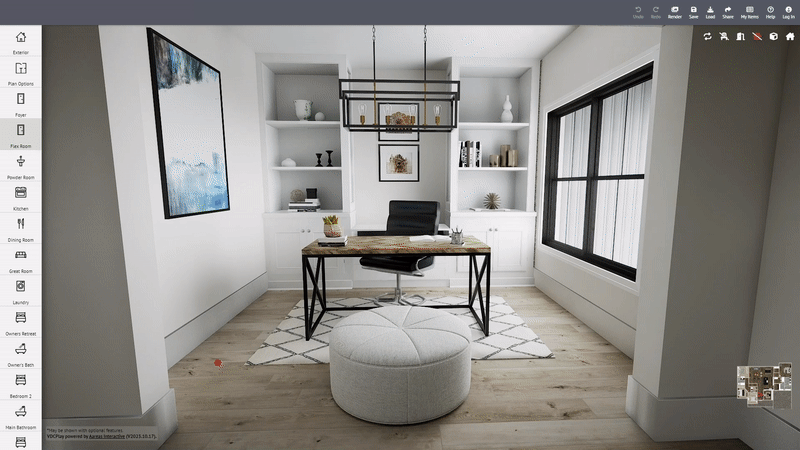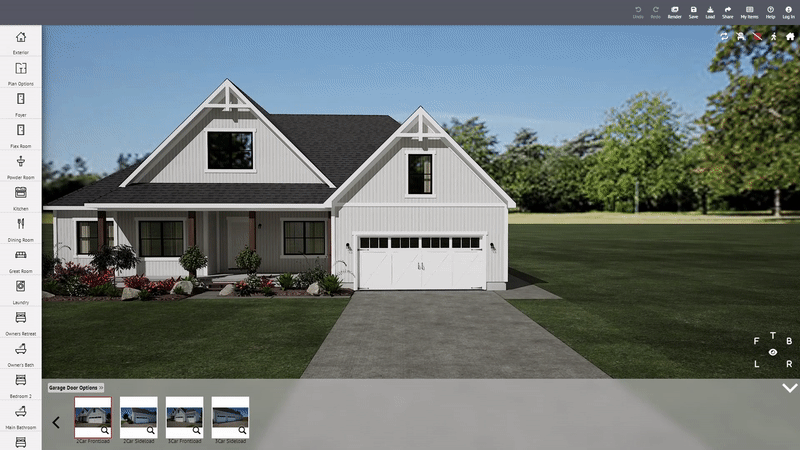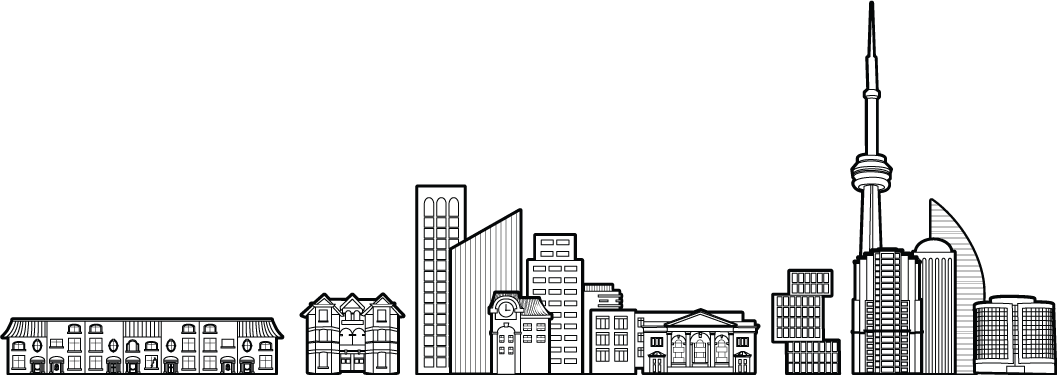In the ever-evolving world of home building, the way we engage with potential buyers is constantly changing. Traditional methods of showcasing homes and finish options have given way to digital transformation trends that are shaping the industry’s future. In this blog post, we’ll draw a powerful analogy between the rise and fall of Blockbuster and the ascent of Netflix to inspire and educate builders on the importance of adapting to these trends.
The Blockbuster and Netflix Example
Remember the days when renting a movie meant a trip to your local Blockbuster store? You’d browse the aisles, select a movie from the limited inventory, and hope they had a copy available. It was a process that worked for a while, but it had its limitations. Blockbuster was the go-to choice for movie rentals, but it lacked the convenience that modern consumers crave.
Then came Netflix, revolutionizing the way we consume entertainment. With a vast library of movies and TV shows available at your fingertips, Netflix eliminated the need for physical copies and store visits. You could watch what you wanted, when you wanted, without leaving your home. The convenience of on-demand streaming made Netflix an industry giant, while Blockbuster’s outdated model led to its decline.

How is This Relevant to the Home Building Industry
Shifting our focus to home building, traditional methods such as in-person design center visits and physical renderings have dominated the industry for decades. However, the wave of digital transformation is introducing innovative possibilities.
Imagine a scenario where potential buyers can explore photorealistic home environments and make finish selections through virtual means. This represents a significant shift in the industry, moving away from physical limitations and towards digital innovation.

- Adaptation to Consumer Behavior
- Netflix’s Approach: Netflix observed the shift in consumer behavior towards wanting convenience and instant access to content.
- Application to Home Building: Modern consumers are seeking convenience, efficiency, and a tailored experience in their purchasing journey. Virtual Design Centers are well-positioned to meet these expectations, providing a seamless and user-centric experience that aligns with today’s consumer behavior.
- Leveraging Technology for Convenience
- Netflix’s Innovation: Netflix invested in streaming technology, making it easy for customers to access content from anywhere, at any time.
- Application to Home Building: Virtual Design Centers harness the power of technology to bring unparalleled convenience to home buyers. They can now visualize and select home finishes from anywhere, transforming the home customization process into a comfortable and user-friendly experience.
- Cost Efficiency
- Blockbuster’s Downfall: Blockbuster’s physical stores resulted in high overhead costs, contributing to its downfall.
- Application to Home Building: The adoption of Virtual Design Centers not only enhances the buyer’s experience but also introduces significant cost savings. By reducing the reliance on physical spaces and the associated overhead costs, builders can allocate resources more efficiently. Builders can also reduce their model home inventory, significantly reducing the associated overheads.
- Staying Ahead of the Competition
- Netflix’s Market Dominance: Netflix’s willingness to innovate and adapt quickly helped it stay ahead of competitors and dominate the market.
- Application to Home Building: In a competitive market, differentiation is key. Virtual Design Centers offer builders an opportunity to stand out, providing innovative solutions that cater to the evolving needs of home buyers.
- Scalability and Flexibility
- Netflix’s Global Reach: Netflix’s virtual model allowed it to easily scale and expand its services globally.
- Application to Home Building: The digital nature of Virtual Design Centers means they are inherently scalable and flexible, allowing builders to swiftly update product offerings and respond to market changes with ease. In addition, builders can easily sell and service out of state buyers and investors.
- Enhanced Buyer Experience
- Netflix’s User Experience: Netflix focused on creating a seamless and personalized user experience, contributing to its high customer satisfaction.
- Application to Home Building: Virtual Design Centers excel in delivering an enriched buyer experience. Through interactive tools, real-time visualization, and personalized recommendations, they create a user journey that is both engaging and satisfying.
- Data-Driven Decisions
- Netflix’s Use of Data: Netflix uses customer data to make informed decisions and provide personalized content recommendations.
- Application to Home Building: The wealth of customer data generated by Virtual Design Centers is invaluable. It empowers builders to make informed decisions, refine their product offerings, and continually enhance the buyer’s experience.
- Risk Mitigation
- Netflix’s Proactive Approach: Netflix mitigated the risk of obsolescence by proactively adapting to changes in the market.
- Application to Home Building: Embracing Virtual Design Centers is a proactive step towards safeguarding a builder’s market position. It mitigates the risk of obsolescence, ensuring that builders remain competitive and relevant in a rapidly evolving industry.
- Building for the Future
- Netflix’s Long-Term Vision: Netflix invested in streaming and original content with a long-term vision in mind, which paid off as the industry evolved.
- Application to Home Building: Investing in a Virtual Design Center is not just a tactical move; it’s a strategic decision that positions builders for long-term success. As the industry continues to evolve, those who have embraced digital transformation will be well-placed to thrive.
- Buyer Empowerment
- Netflix’s Empowerment of Viewers: Netflix empowered viewers to make their own choices, watch content on their terms, and enjoy a personalized experience.
- Application to Home Building: Virtual Design Centers put the power back in the hands of the home buyers. They provide a platform for buyers to take control of the design process, resulting in a sense of ownership and increased satisfaction.
Why It’s Time for Builders to Transition

So, why is now the perfect time for builders to embrace these digital transformation trends?
- Advancement of Technology: The technological landscape is advancing at an unprecedented pace, with innovations that were once the stuff of science fiction becoming reality. Virtual and augmented reality, 3D rendering, and interactive design tools are now more sophisticated and user-friendly than ever before.
- Unprecedented Accessibility: Adopting a Virtual Design Center enables builders to reach buyers from diverse geographical locations, breaking down barriers and expanding market reach. This level of accessibility ensures that home buyers can browse and make selections at their convenience, eliminating the need for travel and in-person appointments.
- Streamlined Efficiency and Tangible Cost Savings: The transition to a virtual platform significantly cuts down the time spent on physical appointments, enhancing efficiency for both builders and buyers. Additionally, the reduced need for maintaining a physical design center translates to substantial cost savings, a crucial factor in today’s economic climate.
- Elevating the Buyer Experience: Virtual Design Centers are equipped with interactive and immersive tools, allowing buyers to visualize their selections in a comprehensive manner. By having the ability to see their finish options come to life in real-time, buyers can make decisions with greater assurance, enhancing their overall experience.
- Leveraging Data for Strategic Insights: The digital nature of Virtual Design Centers provides builders with the ability to track and analyze buyer interactions, offering invaluable insights for future enhancements. This data-driven approach also enables the provision of personalized product recommendations, tailoring the experience to individual preferences.
- Contributing to Sustainability: By minimizing the necessity for travel and physical samples, Virtual Design Centers play a significant role in reducing carbon footprint, aligning with global sustainability efforts.
- Gaining a Competitive Edge: Embracing a Virtual Design Center showcases a builder’s commitment to innovation, potentially attracting a broader customer base. This forward-thinking approach also serves as a market differentiator, providing a unique selling proposition in a competitive landscape.
- Ensuring Adaptability for Future Growth: Virtual Design Centers offer unparalleled scalability and flexibility, allowing builders to effortlessly expand their finish offerings or customer base and swiftly adapt to market changes or emerging trends.
- Facilitating Collaborative Endeavors: The adoption of virtual tools enhances communication and collaboration between builders, designers, and buyers, ensuring that all parties are on the same page. A centralized system for tracking selections and changes further reduces the risk of miscommunication.
- Mitigating Risks and Enhancing Legal Protection: The digital documentation provided by Virtual Design Centers reduces the likelihood of errors in selections or orders, and serves as a protective measure in case of disputes, offering both clarity and security.
- Boosting Customer Satisfaction and Empowerment: Transparency throughout the selection process, clear visibility of choices, and the empowerment of buyers to take control of their decisions culminate in higher customer satisfaction, solidifying the builder’s reputation and customer loyalty.

In conclusion, the Blockbuster and Netflix analogy perfectly illustrates the importance of embracing digital transformation in the home building industry. Just as Blockbuster’s outdated model couldn’t compete with Netflix’s convenience, builders relying solely on traditional methods risk falling behind. The time for change and transition is now. By providing convenient, web-based solutions, builders can not only stay relevant but also thrive in this digital age. It’s time to make the switch and secure a prosperous future in home building.
Interested in learning more about how a digital design center could work for you? Check out our product page: Virtual Design Centre.
If you’re interested in this topic, we have an upcoming webinar. Feel free to sign up.

Follow Us On Social